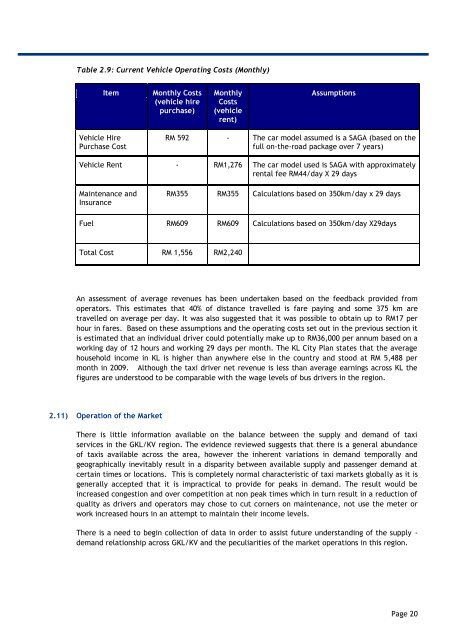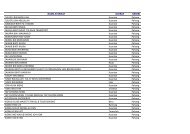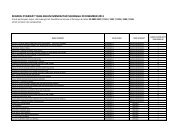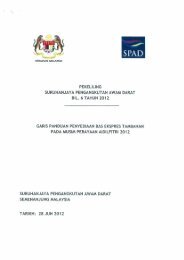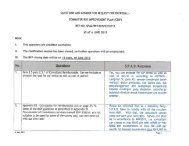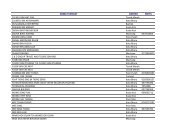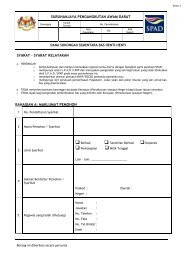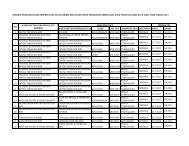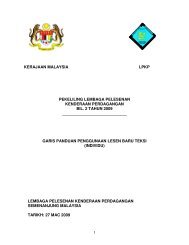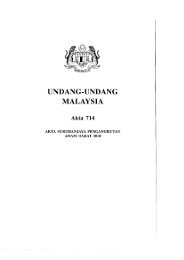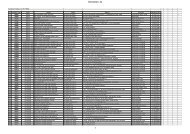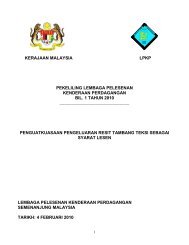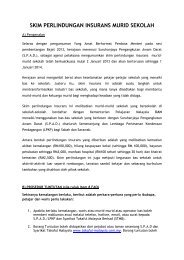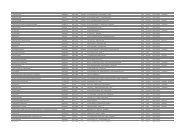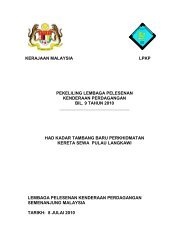4. Developing the Taxi Transformation Plan - SPAD
4. Developing the Taxi Transformation Plan - SPAD
4. Developing the Taxi Transformation Plan - SPAD
You also want an ePaper? Increase the reach of your titles
YUMPU automatically turns print PDFs into web optimized ePapers that Google loves.
Table 2.9: Current Vehicle Operating Costs (Monthly)<br />
Item<br />
Monthly Costs<br />
(vehicle hire<br />
purchase)<br />
Monthly<br />
Costs<br />
(vehicle<br />
rent)<br />
Assumptions<br />
Vehicle Hire<br />
Purchase Cost<br />
RM 592 - The car model assumed is a SAGA (based on <strong>the</strong><br />
full on-<strong>the</strong>-road package over 7 years)<br />
Vehicle Rent - RM1,276 The car model used is SAGA with approximately<br />
rental fee RM44/day X 29 days<br />
Maintenance and<br />
Insurance<br />
RM355 RM355 Calculations based on 350km/day x 29 days<br />
Fuel RM609 RM609 Calculations based on 350km/day X29days<br />
Total Cost RM 1,556 RM2,240<br />
An assessment of average revenues has been undertaken based on <strong>the</strong> feedback provided from<br />
operators. This estimates that 40% of distance travelled is fare paying and some 375 km are<br />
travelled on average per day. It was also suggested that it was possible to obtain up to RM17 per<br />
hour in fares. Based on <strong>the</strong>se assumptions and <strong>the</strong> operating costs set out in <strong>the</strong> previous section it<br />
is estimated that an individual driver could potentially make up to RM36,000 per annum based on a<br />
working day of 12 hours and working 29 days per month. The KL City <strong>Plan</strong> states that <strong>the</strong> average<br />
household income in KL is higher than anywhere else in <strong>the</strong> country and stood at RM 5,488 per<br />
month in 2009. Although <strong>the</strong> taxi driver net revenue is less than average earnings across KL <strong>the</strong><br />
figures are understood to be comparable with <strong>the</strong> wage levels of bus drivers in <strong>the</strong> region.<br />
2.11) Operation of <strong>the</strong> Market<br />
There is little information available on <strong>the</strong> balance between <strong>the</strong> supply and demand of taxi<br />
services in <strong>the</strong> GKL/KV region. The evidence reviewed suggests that <strong>the</strong>re is a general abundance<br />
of taxis available across <strong>the</strong> area, however <strong>the</strong> inherent variations in demand temporally and<br />
geographically inevitably result in a disparity between available supply and passenger demand at<br />
certain times or locations. This is completely normal characteristic of taxi markets globally as it is<br />
generally accepted that it is impractical to provide for peaks in demand. The result would be<br />
increased congestion and over competition at non peak times which in turn result in a reduction of<br />
quality as drivers and operators may chose to cut corners on maintenance, not use <strong>the</strong> meter or<br />
work increased hours in an attempt to maintain <strong>the</strong>ir income levels.<br />
There is a need to begin collection of data in order to assist future understanding of <strong>the</strong> supply -<br />
demand relationship across GKL/KV and <strong>the</strong> peculiarities of <strong>the</strong> market operations in this region.<br />
Page 20


